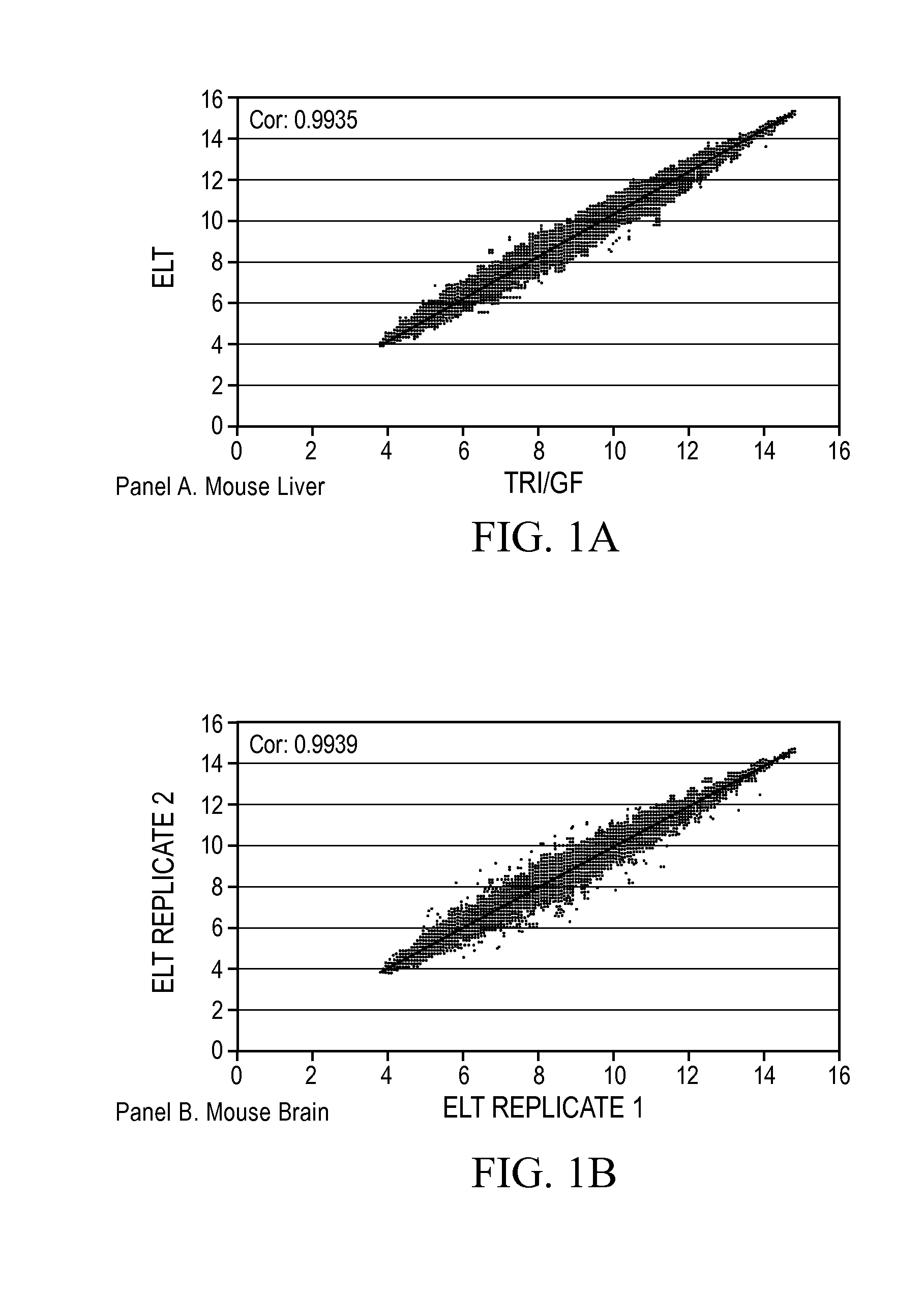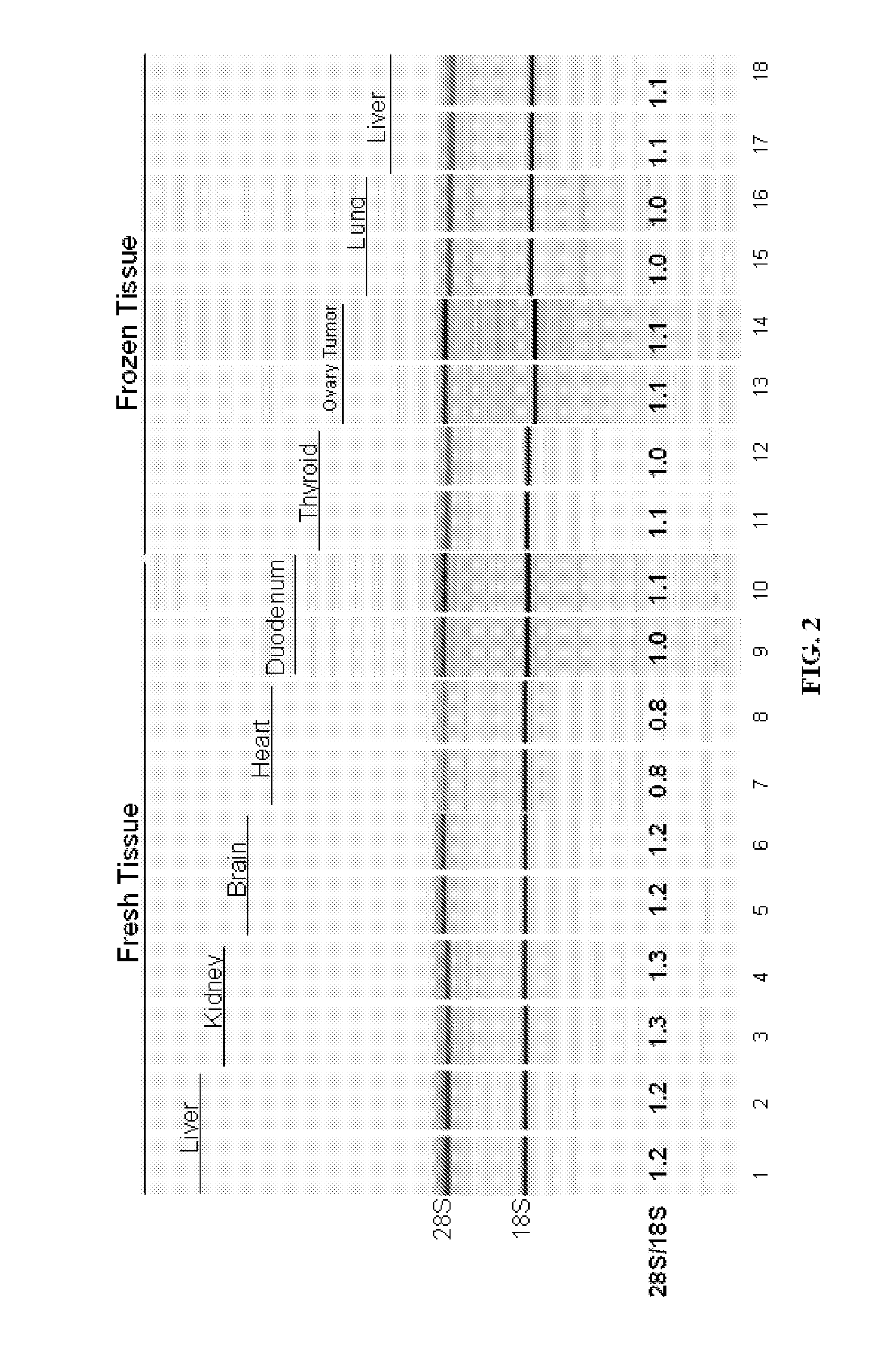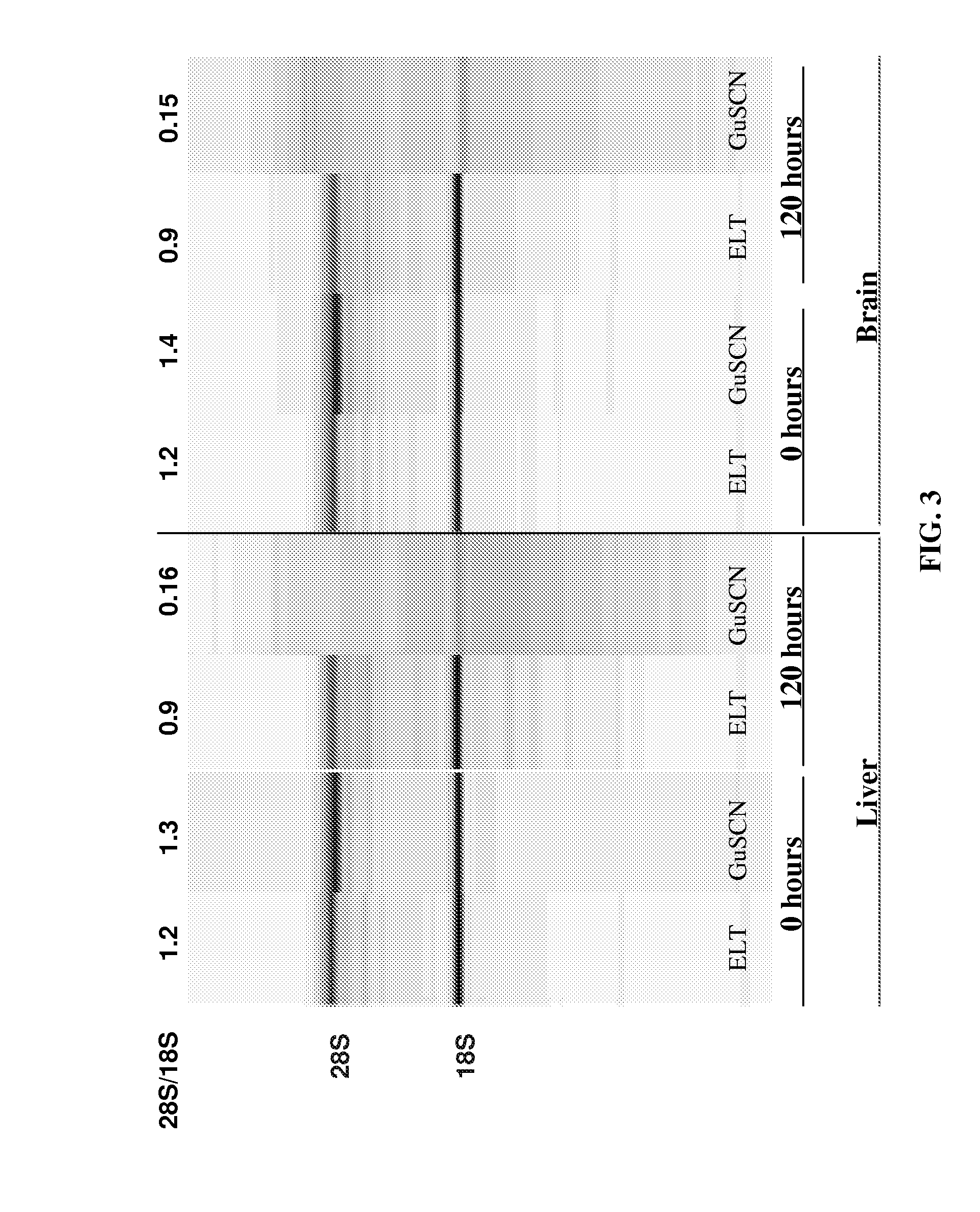Enzymatic digestion of tissue
a tissue and enzyme technology, applied in the field of molecular biology, can solve the problems of low throughput and methods that can also present biological hazards, and achieve the effect of reducing the number of enzymes
- Summary
- Abstract
- Description
- Claims
- Application Information
AI Technical Summary
Benefits of technology
Problems solved by technology
Method used
Image
Examples
example 1
Criteria for the Isolation and Analysis of RNA
[0132]The inventors have developed compositions and methods that can be used to obtain intact nucleic such as RNA from a variety of cell-containing samples. The extraction, isolation, and quantification of the nucleic acid can be performed in an efficient manner and in a relatively short period of time. A determination of the level of quality or intactness of the RNA can also be measured in an efficient and accurate manner. The following provides a non-limiting example of how to perform these steps.
[0133]Extraction: The extraction of RNA from a cell-containing sample can be performed in a number of ways such as those disclosed throughout this specification and those known to a person of ordinary skill in the art. In one example, the inventors obtained a whole liver of a mouse and dissected it into fragments of up to 10 mg. One fragment of mouse liver was added to a solution (100 ul) comprising 10 mM CHES pH 9.0, 2 mM CaCl2, 0.1 mM EDTA, ...
example 2
The Enzymatic Potency of a Combination of Proteases is Superior to a Single Protease
[0139]To demonstrate the benefit of a protease cocktail, a fluorometric kinetic assay was developed to determine the synergistic activity of proteases in combination. This assay contained 2.5 μg / ml final Bodipy TR-X labeled casein substrate (Molecular Probes) in a background of unlabeled BSA, phosphorylase, lysozyme, and casein 0.6 mg / ml final each. The protein substrate was then added to the Tris-based buffer to a reaction volume of 95 μl.
[0140]The kinetic assay was initiated with 5 μl of each respective protease or combination and data was collected on a SpectraMAX GeminiXS Fluorometer (Molecular Devices). The excitation wavelength was set at 558 nm and the emission wavelength was set at 623 nm. The reaction proceeded at 30 C, and time points were collected every 45 seconds for 20 minutes. The inventors discovered that a cocktail of Proteinase K and Subtilisin Carlsberg (0.4 mg / ml each final) was a...
example 3
A Combination of Detergent and Proteases to Recover Extract Intact RNA
[0142]In a study to demonstrate the benefits of sodium dodecyl sulfate (SDS) in the presence of proteases to extract intact RNA from tissue, Proteinase K (0.4 mg / ml final) and Subtilisin Carlsberg (0.4 mg / ml final) were added to a Tris-based buffer containing 0.5% to 5% w / v final SDS. Inasmuch as SDS enhances apparent protease activity and inactivates RNases in solution, a condition without protease (but including SDS) was tested. The converse reaction containing proteases but no SDS was also evaluated. Up to 10 mg of frozen mouse liver tissue was added to each 100 ul reaction and incubated at room temperature with rapid shaking for 10 minutes. Following tissue digestion, the tissue lysate was purified by an RNA-binding glass-fiber filter method (RNAqueous, Ambion). The intactness of the RNA was assessed using the Agilent 2100 Bioanaylzer software after separation on an RNA LabChip®. As shown in Table 4 and FIG. 2...
PUM
| Property | Measurement | Unit |
|---|---|---|
| pH | aaaaa | aaaaa |
| concentration | aaaaa | aaaaa |
| concentration | aaaaa | aaaaa |
Abstract
Description
Claims
Application Information
 Login to View More
Login to View More - R&D
- Intellectual Property
- Life Sciences
- Materials
- Tech Scout
- Unparalleled Data Quality
- Higher Quality Content
- 60% Fewer Hallucinations
Browse by: Latest US Patents, China's latest patents, Technical Efficacy Thesaurus, Application Domain, Technology Topic, Popular Technical Reports.
© 2025 PatSnap. All rights reserved.Legal|Privacy policy|Modern Slavery Act Transparency Statement|Sitemap|About US| Contact US: help@patsnap.com



